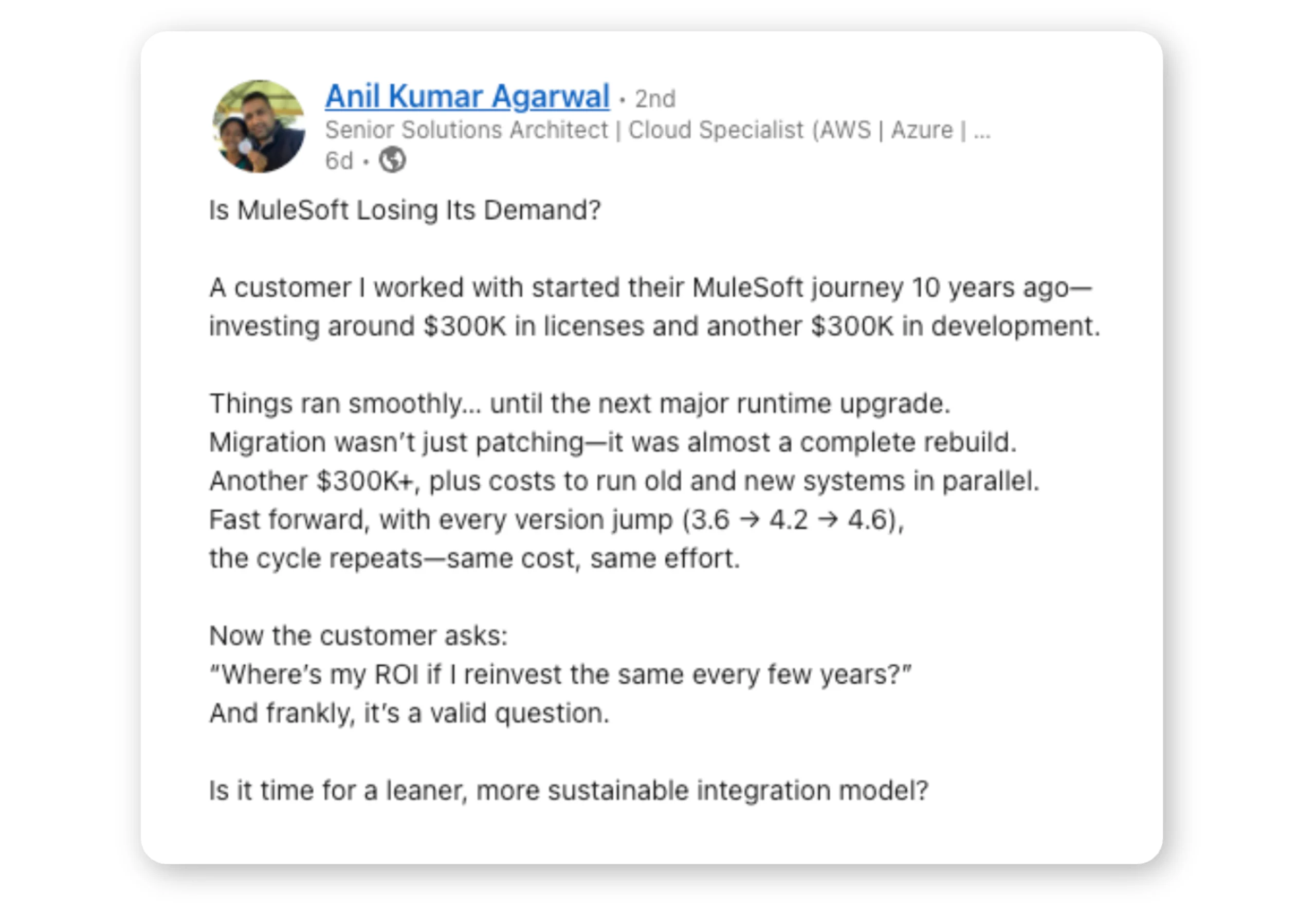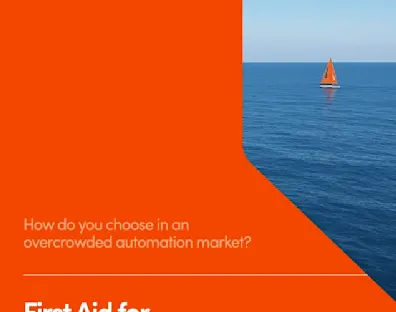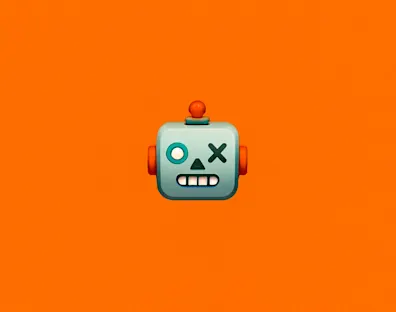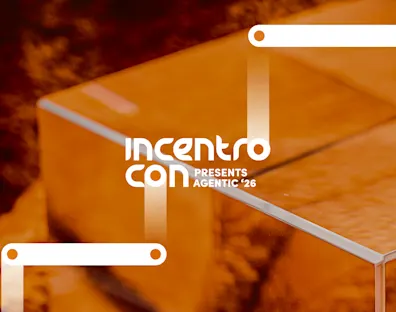
5 min read
24 June 2025
Endless maintenance is not an IT strategy: why decoupled architecture outperforms legacy iPaaS
For many large companies, integration platforms are the backbone that keeps everything running. But many teams get stuck in a quagmire of maintenance, upgrades, and migration projects. Instead of moving your business forward, time and money are spent on fixing bugs, testing, and working through the same checklist with every update.
A real-world example is currently making the rounds in the integration world:

Sounds familiar? You're definitely not alone. The dream: you invest heavily, set up your integrations, and reap the benefits for years. The reality? Every major upgrade means testing, recoding, and restructuring again, costing almost as much as your initial implementation.
Here's the crux of the matter: this problem doesn't just affect companies like MuleSoft from the example above. As we see with other "medium-code" platforms and most legacy iPaaS solutions, directly coupling your integrations to the execution environment traps you in an endless cycle of rebuilding.
Your IT team becomes an upgrade team instead of an innovation engine. It's like bailing water from a leaky boat into another leaky boat — you might stay afloat for a while, but you're not getting anywhere.
Maintenance that never stops
Upgrading your integration platform should make life easier, not harder. Yet for many companies, every platform "upgrade" becomes a source of frustration, escalating costs, and wasted time. The root cause isn't just vendor policies — it's baked into the design.
The harsh truth: everyone who has been through multiple upgrades knows that maintenance never stops and your company pays the bill — this is the inevitable consequence of tightly coupled architecture.
1. Major upgrades aren't patches. They're rebuild projects
"It's never as simple as installing a patch. Especially not when you have specific implementations without backwards compatibility... Moving to a new major version is like switching to a completely new product. Going from Mule 3 to Mule 4 is more like switching from Salesforce to Microsoft Dynamics 365." – Karol Skrzymowski, Integration Architect
2. Technical debt makes the problem worse
"If the original code already had architectural problems? Then customers have to pay extra unless they first pay off that technical debt... A customer came back for Java 17 and what should have been a simple task suddenly became a complex project." – Mahesh Raja, Enterprise Architect, Head of COE – MuleSoft Technology
3. Upgrades keep coming back — along with the costs and testing
"When you have to put more than 100 APIs through a full test cycle every 8-9 months, that eats up all the benefits — and it becomes increasingly difficult to justify the investment." – Harshank Bansal, Certified MuleSoft & AWS Architect
This isn't just a MuleSoft issue. Similar platforms like Boomi - and most traditional integration solutions - have the same problem: they couple what you build to how it runs. When the underlying engine changes, your integrations break. It's like every database update breaking your queries, or every Excel version forcing you to rewrite your formulas.
Workato: decoupled by design, built for change
Workato's approach is fundamentally different. This architecture separates the setup ("the recipe") from the execution ("the cooking process"). With every platform upgrade, everything just keeps working: your critical integrations and workflows keep running — without manually fixing bugs, testing, or downtime.
Here's what this delivers for your business:
✓ No more 'upgrade tax': your integrations keep working, regardless of how the platform evolves. You build once — without endless cycles of testing and rebuilding.
✓ Business continuity as standard: your critical workflows keep running — even when security and functionality are updated.
✓ Better security: automatic security patches eliminate vulnerable periods during traditional upgrades.
✓ Continuous innovation, without downtime: nearly 1,000 platform improvements in 2024 — all without disrupting your business processes.
✓ Everything in one: where competitors string different tools together (resulting in fragmented systems), Workato offers one platform for everything: iPaaS, API management, EDI, MDM, ETL/ELT, AI Agents and more.
This architecture isn't just future-proof — it gives companies peace of mind who can't afford downtime, lost productivity, or technical debt.
Workato vs. Legacy iPaaS architectures
What happens with... | Legacy (Tightly coupled) | Workato (Decoupled) |
Major platform upgrade | Full regression, test, rebuild | No changes needed |
Security patch | Manual, per integration | Automatic, platform-wide |
New feature | Risk of disruption, extra work | Integrations benefit automatically |
User experience | Fragmented (different tools for everything) | Everything in one builder |
Maintenance (% of total costs) | 40-60% | <10% |
For architects: this is about future-proofing, not hypes
The pace of business - and what you demand from your integrations - is only increasing. If every update turns your architecture upside down, you're wasting time and money without getting anything in return. With Workato's decoupled approach, upgrades, scaling, and innovation become a non-issue for your team.
"If every major upgrade breaks things, that's punishment for existing customers." – Yee Loon Khoo, Integration Consultant at Workato
It doesn't have to be this way.
By choosing Workato's decoupled and serverless architecture, you eliminate endless maintenance cycles and your team can focus on what truly adds value. With a platform built for resilience, agility, and continuous change, your team can finally switch from endless maintenance to an IT strategy focused on innovation and impact.




